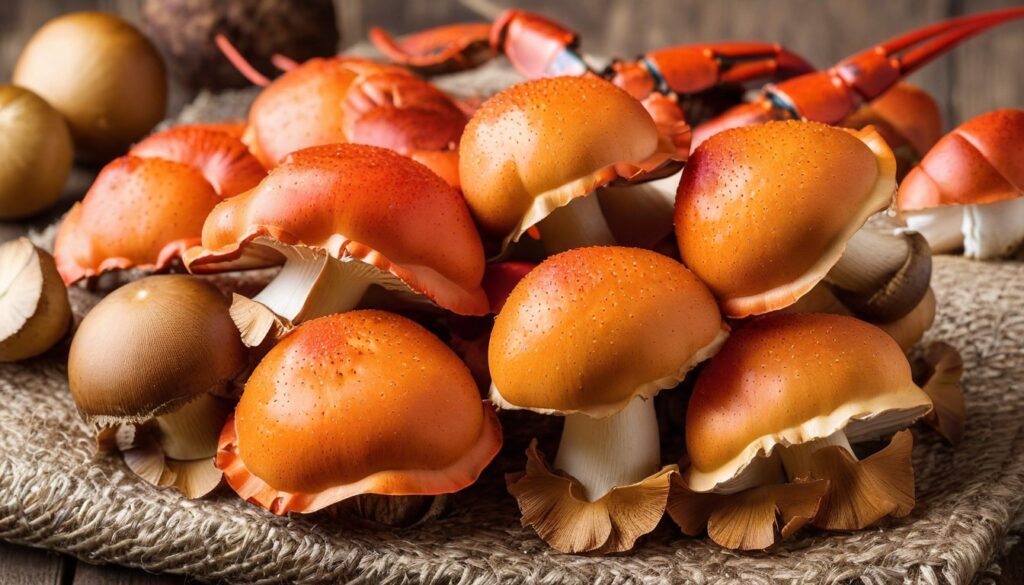Lobster mushrooms are a popular ingredient in many dishes due to their unique flavor and vibrant color. However, to preserve their freshness and enhance their taste, proper storage is essential. In this ultimate guide, we will provide you with the best techniques and tips on how to store lobster mushrooms effectively.
Key Takeaways
- Understanding the characteristics and culinary uses of lobster mushrooms is essential before storing them.
- Harvesting lobster mushrooms at peak freshness ensures the best storage results.
- Properly clean and prepare lobster mushrooms before storing them to remove any dirt or impurities.
- Refrigerating, freezing, drying, or using preservatives are all effective ways to store lobster mushrooms.
- Experiment with different storage techniques to find the one that best suits your culinary needs.
Understanding Lobster Mushrooms
If you’re a mushroom enthusiast, then you know the distinct appearance and flavor of lobster mushrooms. These striking fungi are known for their bright red-orange exterior, which resembles cooked lobster meat. They are often found growing on the forest floor near the roots of trees and can be harvested in the fall.
Lobster mushrooms belong to the Hypomyces lactifluorum species, which grows on other mushrooms, including white mushrooms, russulas, and milk caps. The Hypomyces lactifluorum fungus has a parasitic relationship with the host mushroom, causing it to change in appearance and flavor.
When the Hypomyces lactifluorum fungus infects the host mushroom, it secretes certain enzymes that break down the color pigments and cell walls. As a result, the host mushroom’s colors and flavor change completely, and it becomes the vibrant and delicious lobster mushroom we know and love.
The Culinary Uses of Lobster Mushrooms
Lobster mushrooms have a unique flavor profile that is earthy, nutty, and slightly sweet, making them a popular choice for culinary enthusiasts. They are versatile and can be used in a variety of dishes, including soups, stews, sauces, and risottos.
Their firm texture and intense flavor make them a great substitute for meat in vegetarian and vegan dishes. They can also be sautéed, roasted, or grilled and served alone as a flavorful side dish.
“The distinct appearance and flavor of lobster mushrooms make them a favorite among culinary enthusiasts.”
The Nutritional Value of Lobster Mushrooms
Like most mushrooms, lobster mushrooms are low in calories and high in nutrients. They are an excellent source of vitamin D, which is essential for bone health and a strong immune system. They also contain antioxidants that protect against cell damage, as well as potassium, iron, and fiber.
|
Nutrient |
Amount per 100g |
|---|---|
|
Calories |
30 |
|
Protein |
2.5g |
|
Fat |
0.3g |
|
Carbohydrates |
5.8g |
|
Vitamin D |
112% of the recommended daily value (RDV) |
|
Iron |
7% of the RDV |
|
Potassium |
11% of the RDV |
Overall, lobster mushrooms are a delicious and healthy addition to any meal. By understanding their unique characteristics and flavors, you can incorporate them into your cooking and enjoy their distinct taste.
Harvesting Lobster Mushrooms at Peak Freshness
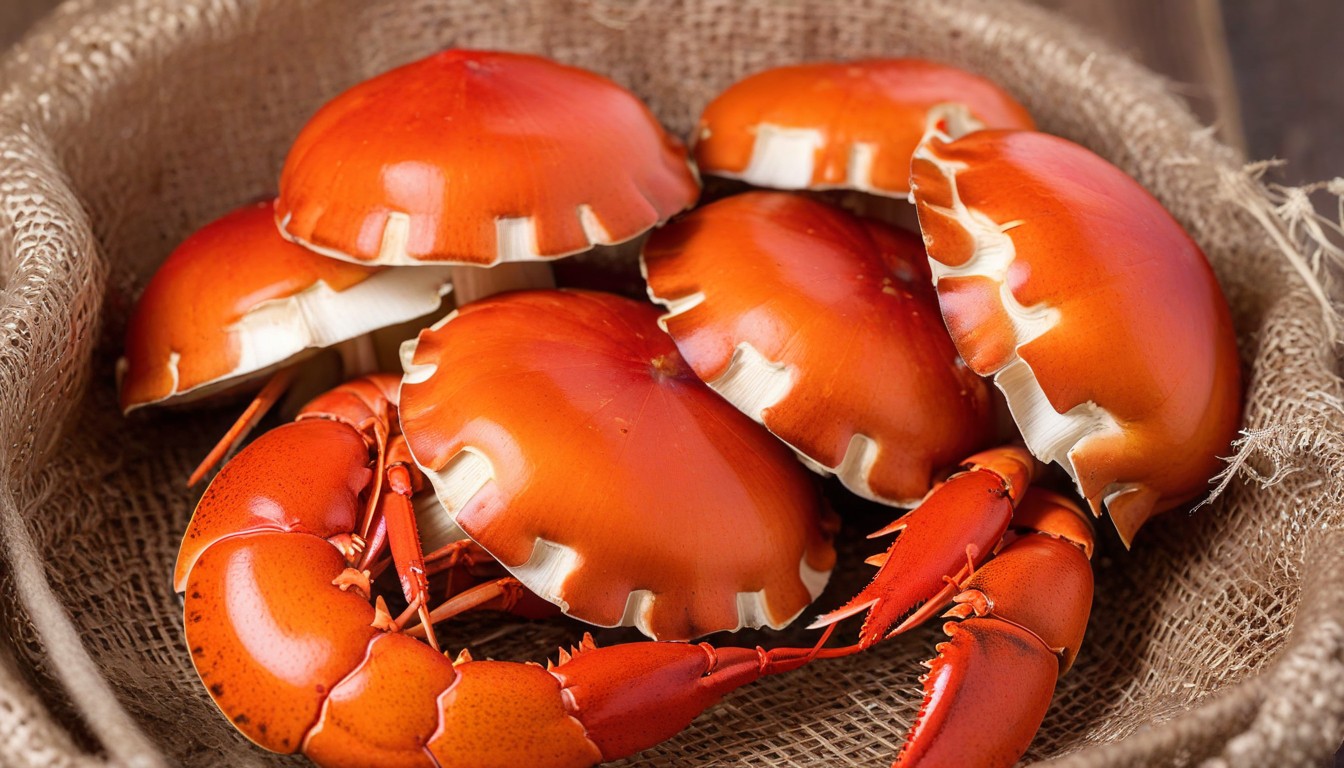
Harvesting lobster mushrooms at the right time is crucial to their freshness and overall quality. These mushrooms are typically in season from late summer to early fall, and it’s best to harvest them when they have reached their peak ripeness. This will ensure that they have the most intense flavor and vibrant color.
When harvesting lobster mushrooms, look for mushrooms that have bright red-orange hues and white spots. They should be firm to the touch and have a strong, earthy scent. Avoid mushrooms that are wilted, have soft spots, or show signs of decay.
It’s important to use a sharp knife or shears to cut the mushrooms at the base of their stems, rather than pulling them out of the ground. This will prevent damage to the surrounding soil and ensure that the mushrooms remain intact.
Once harvested, place the mushrooms in a basket or container lined with a damp paper towel to keep them moist. Avoid washing them at this stage, as excess moisture can lead to spoilage. Instead, wait until you are ready to cook or store them before cleaning them thoroughly.
Peak Freshness Tip:
For the freshest lobster mushrooms, harvest them early in the morning when the air is cool and moist. This will help to preserve their delicate flavor and texture.
Cleaning Lobster Mushrooms
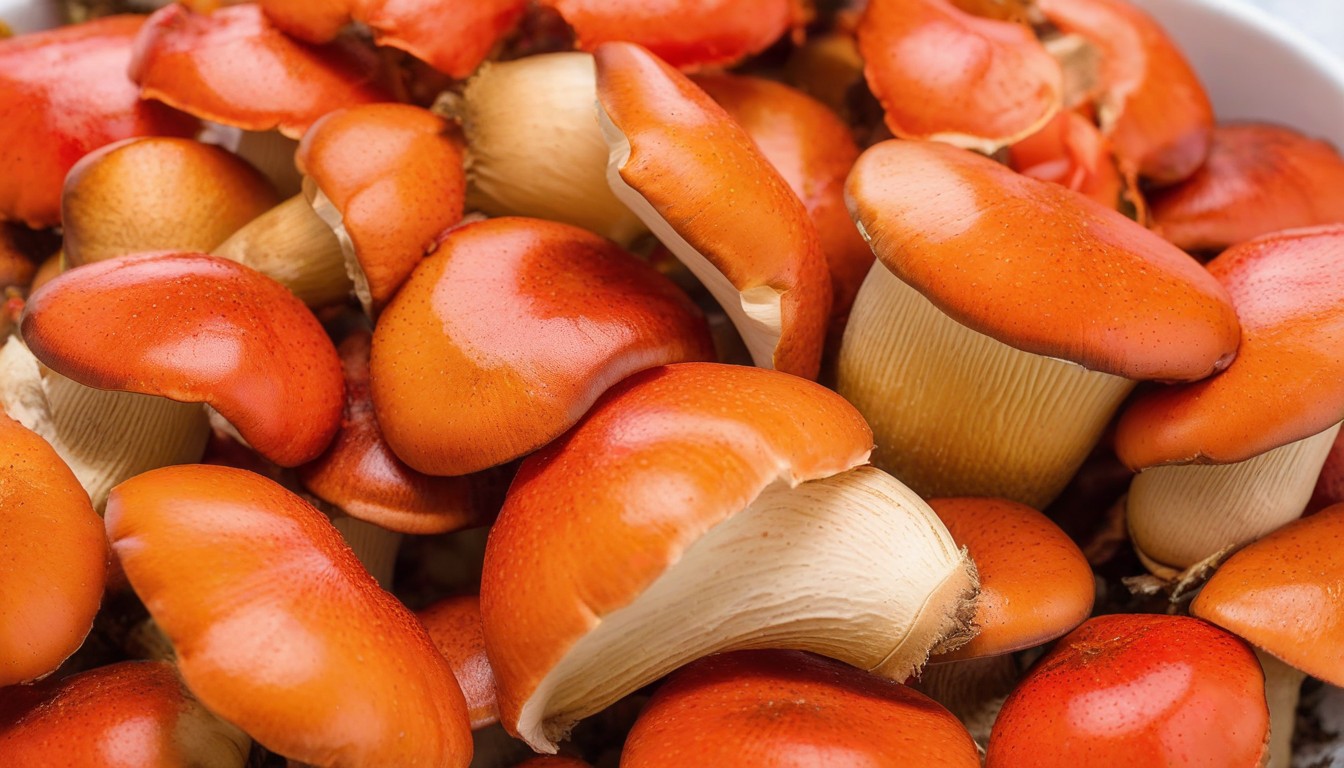
Before storing your lobster mushrooms, it’s crucial to clean them thoroughly to remove any dirt or debris that could affect their taste or texture. Follow these simple steps to ensure your lobster mushrooms are ready for storage:
- Fill a bowl with cold water and submerge the mushrooms.
- Gently agitate the water to loosen any dirt or debris.
- Remove the mushrooms from the water and lay them on a clean towel.
- Using a soft-bristled brush or a damp cloth, gently wipe off any remaining dirt or debris.
- Trim the stems as needed, removing any tough or woody sections.
- Dry the mushrooms thoroughly with a clean towel or paper towel before storing.
It’s essential to avoid soaking your lobster mushrooms for too long, as they can absorb water and become mushy. Additionally, avoid washing them under running water, which can damage their delicate texture and flavor.
Tip: If you’re short on time, you can also use a mushroom brush to clean your lobster mushrooms quickly. These specialized brushes have soft bristles that can remove any dirt or debris without damaging the mushrooms.
Refrigerating Lobster Mushrooms
Refrigerating lobster mushrooms is an excellent way to extend their shelf life while retaining their unique flavor and texture. To ensure your mushrooms stay fresh and flavorful, follow these best practices:
- Proper temperature: Store your lobster mushrooms in the refrigerator at a temperature between 34°F and 38°F (1°C to 3°C).
- Moisture control: Lobster mushrooms are highly susceptible to moisture and can quickly become soggy and slimy. To prevent this, wrap your mushrooms in a paper towel or cloth and place them in a paper or plastic bag. Avoid storing them in an airtight container, which can cause excess moisture to build up.
- Expiration: Refrigerated lobster mushrooms can last up to 10 days with proper storage. However, for the best quality and flavor, it’s best to consume them within the first 4-5 days.
By following these simple guidelines, you can enjoy your lobster mushrooms in a variety of dishes throughout the week. Whether sautéed on their own or added to pasta dishes, omelets, or soups, refrigerated lobster mushrooms will add a burst of flavor to any meal.
Freezing Lobster Mushrooms
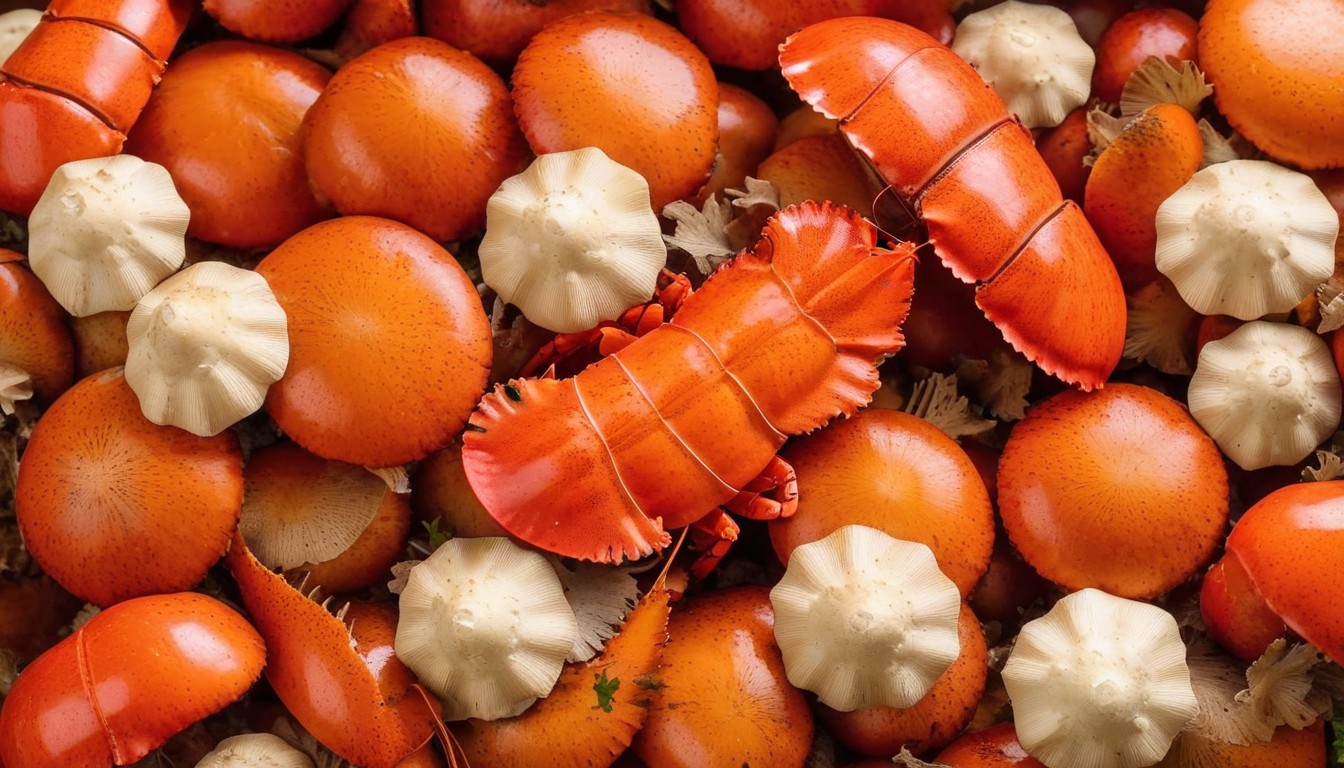
If you want to preserve the flavor and texture of your lobster mushrooms for an extended period, freezing is an excellent option. Freezing lobster mushrooms can be a good alternative if you have more mushrooms than you can use in a short period. Here’s what you need to know:
Blanching Lobster Mushrooms Before Freezing
Blanching is a pre-cooking process that involves briefly boiling or steaming the mushrooms in water before freezing them. Blanching lobster mushrooms helps maintain their texture and flavor, keeping them from becoming mushy or losing their flavor during the freezing process.
To blanch lobster mushrooms, follow these steps:
- Clean the mushrooms by wiping them with a damp cloth.
- Cut the mushrooms into uniform pieces.
- Boil or steam the mushrooms for 3-4 minutes, depending on the size of the pieces.
- Transfer the mushrooms to a bowl of ice water to stop the cooking process.
- Drain the mushrooms and pat them dry with a paper towel.
Packaging Lobster Mushrooms for Freezing
After blanching, it’s essential to package your lobster mushrooms correctly to prevent freezer burn and maintain their quality. You can use vacuum-sealed bags, airtight containers, or freezer-safe plastic bags to store your mushrooms.
If using bags, pack the mushrooms in small portions and remove as much air as possible before sealing. Label the bags with the date and amount of mushrooms included.
Storing Lobster Mushrooms in the Freezer
Proper storage is crucial when freezing mushrooms. Store your packaged mushrooms in the coldest part of your freezer, ensuring they are not stacked or smashed. This can cause damage to the mushrooms and can make them challenging to thaw and use later on.
Your frozen lobster mushrooms can last up to 8 months in the freezer if packaged and stored correctly.
Tip: Frozen lobster mushrooms are best used in cooked dishes, such as soups, stews, and sauces. They may not be suitable for raw dishes such as salads or as a garnish.
Experiment with freezing lobster mushrooms to find the method that works best for you. Whether you blanch before freezing or not, it’s an excellent way to enjoy your lobster mushrooms throughout the year.
Drying Lobster Mushrooms
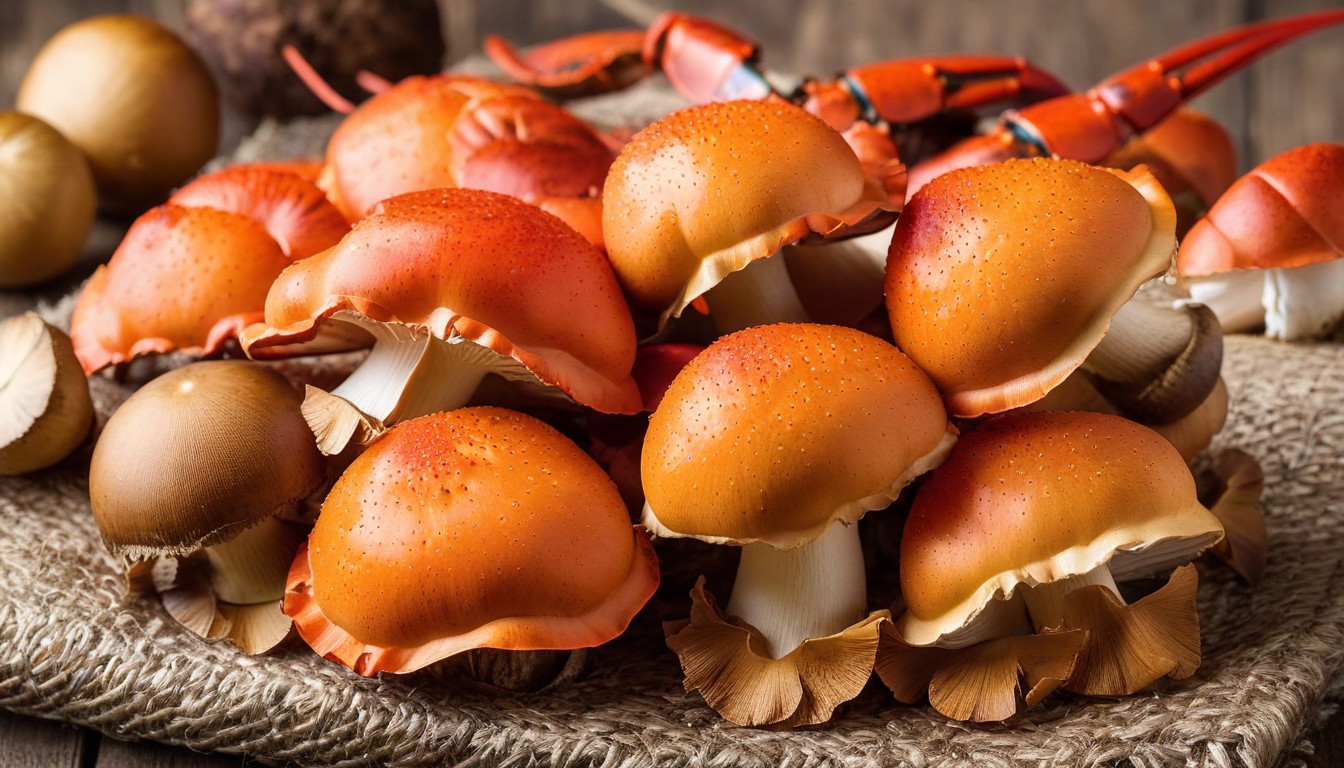
Drying lobster mushrooms is one of the oldest and most popular preservation methods that concentrates their flavor, making them perfect for use in soups, stews, and sauces. The drying process removes the water from the mushrooms, extending their shelf life and preventing spoilage.
To dry lobster mushrooms, start by cleaning them thoroughly and trimming any tough or woody parts. Slice the mushrooms into even, thin pieces to ensure even drying. Spread the slices out on a baking sheet in a single layer, making sure they do not touch.
Place the baking sheet in a cool, dry place with good air circulation. Avoid direct sunlight or moisture, as this can cause the mushrooms to spoil. Turn the slices over daily to promote even drying and prevent sticking.
The drying process can take anywhere from 1-3 days depending on the humidity levels and thickness of the slices. Once the mushrooms are completely dry, they will be brittle and snap easily. Store the dried mushrooms in an airtight container in a cool, dry place.
To rehydrate dried lobster mushrooms, soak them in water, wine, or stock for about 30 minutes before using them in your recipes. They will absorb the liquid and regain their original texture and flavor.
Using Preservatives for Lobster Mushrooms
If you want to extend the shelf life of your lobster mushrooms but don’t want to use the refrigerating, freezing, or drying methods, you can use preservatives. Preservatives are substances that prevent the growth of harmful bacteria and microorganisms that spoil your food. There are several safe and natural preservatives available that can help maintain the freshness of your mushroom.
Sea Salt
Sea salt is a natural preservative that can help keep your lobster mushrooms fresh for an extended period. It works by drawing out moisture from the mushrooms, which inhibits the growth of bacteria. To use sea salt as a preservative, you need to coat the mushrooms with a layer of salt and store them in a cool, dry place. Use about 1/2 cup of sea salt per pound of mushrooms. Make sure to rinse the mushrooms before using them to remove any excess salt.
Vinegar
Vinegar is another natural preservative that can help keep your lobster mushrooms fresh. It works by creating an acidic environment that inhibits the growth of bacteria. To use vinegar as a preservative, you can pickle the mushrooms by soaking them in a mixture of vinegar, water, and spices. You can then store them in the refrigerator for up to a month. When you’re ready to use them, rinse and drain the mushrooms before cooking.
Citric Acid
Citric acid is a natural preservative that can help keep your lobster mushrooms fresh by reducing the pH level of the mushrooms. This inhibits the growth of bacteria and microorganisms that spoil your food. To use citric acid as a preservative, mix it with water and soak the mushrooms in the solution for a few minutes. You can then store them in the refrigerator for up to a week. Rinse the mushrooms before using them to remove any excess citric acid.
Conclusion
After reading this ultimate guide, you now have a variety of techniques to choose from when it comes to storing lobster mushrooms. Whether you opt for refrigerating, freezing, drying, or using preservatives, it’s essential to start with fresh, properly cleaned mushrooms harvested at peak freshness.
Make sure to experiment with different methods to find the one that best suits your culinary needs and preferences. Remember, maintaining the freshness of lobster mushrooms will ensure that you can enjoy their unique flavor in a variety of dishes throughout the year.
Final Thoughts
We hope this guide has helped you learn how to store lobster mushrooms in the most effective and efficient way possible. Don’t hesitate to share your thoughts or ask questions in the comments section below. We love to hear from our readers!
Thank you for reading, and happy cooking!
FAQ
How long can I store lobster mushrooms in the refrigerator?
Lobster mushrooms can be stored in the refrigerator for up to 7-10 days.
Can I freeze lobster mushrooms without blanching them first?
It is recommended to blanch lobster mushrooms before freezing to preserve their quality and texture.
What is the best way to clean lobster mushrooms?
To clean lobster mushrooms, gently brush off any dirt or debris with a soft brush or cloth. Avoid rinsing them in water as mushrooms absorb moisture easily.
How long do dried lobster mushrooms last?
Properly dried and stored lobster mushrooms can last for up to a year.
Can I use vinegar as a natural preservative for lobster mushrooms?
Vinegar is not recommended as a preservative for lobster mushrooms as it can alter their flavor and texture. It is best to use approved natural preservatives or follow proper storage methods.
Can I store lobster mushrooms in a plastic bag?
It is best to store lobster mushrooms in a paper bag or a breathable container to prevent moisture buildup and maintain their freshness.
Are there any safety concerns when using preservatives for lobster mushrooms?
When using preservatives for lobster mushrooms, it is important to follow the recommended guidelines and use safe, approved preservatives. Be aware of any potential allergies or sensitivities to the preservatives used.
Can I store fresh and dried lobster mushrooms together?
It is recommended to store fresh and dried lobster mushrooms separately to maintain their individual qualities and prevent moisture transfer.

